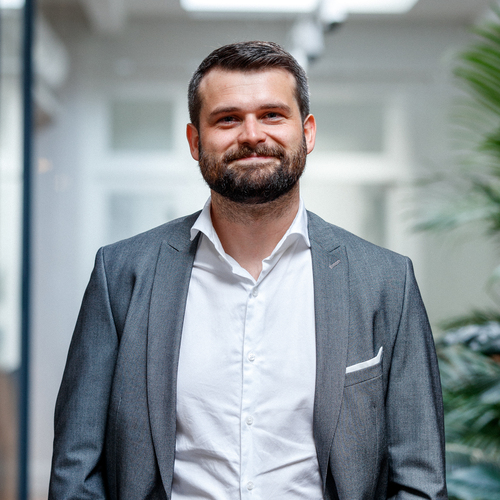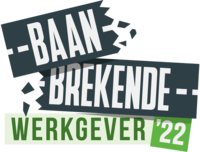
Building added value instead of applications
Writing software remains an often complex process in which many successive steps and activities must be well-thought-out and synchronized. This often involves different teams and experts, each with their own agenda, specializations, and sensitivities. Mistakes are easily made in such situations.
At Pàu Studio, the internal development team of the Antwerp-based IT and design consultancy Pàu is all too familiar with this problem. To avoid such pitfalls, they prefer to use Lean Startup whenever possible. "Lean Startup is a methodology that quickly helps you gain the right insights into a project and adjust it as needed," says Kevin Wenninger, Digital Product Expert at Pàu. "The core ideas are set out in the book The Lean Startup, which was published in 2011 by the American Eric Ries. He describes in the book how a start-up can launch a product quickly, cost-efficiently, and effectively using lean product development. We are now applying those methods to software development."
Who needs this?
Lean Startup is based on two major principles, says Wenninger. "Suppose you are a baker and want to open a new bakery. Then you already have a lot of references and best practices to refer to. You know roughly what your shop will look like, what products you muse bake, and how many customers to expect. You usually don't have that luxury with a new product, idea, or feature. Rarely do you know exactly what it will be or how it will work? You make many assumptions about your product, but in fact, you don't know. So, your first step is to test your assumptions about your product. Are these valid? Or more importantly, do people want your product? Is there a demand for it? Is anyone anticipating it?"
It sounds bizarre, but these are fundamental questions that many companies forget to ask themselves, says Wenninger. And he should know. "I once had the idea of making an app to simplify a building application. In Germany (his native country, ed.), the government at one point published a new 250-page document that would take builders hours to go through. We thought we could make this a lot easier with our digital app, so we started programming like crazy. We started building a platform to manage users, added features to work on the same document with different users, and at one point we were even integrating payment functions (laughs). We were so busy with so many things at once that it would take at least a year before we had a first version of the app ready. Worse still, we realised very late in the game that planners did not actually need such an app. If we hadn't got lost in all that superfluous functionality, we probably would have figured that out much quicker."
And that is a scourge that plagues many software projects, says Kevin Wenninger. Often, projects are so elaborate that no one knows what it is about anymore. And that wastes a lot of time and money.
Build, Measure, Learn
The second principle is that Lean Startup works in short, manageable intermediate steps that allow developers to quickly get the right insights into their product. "Each intermediate step is validated according to the 'build, measure and learn' principle," explains Wenninger. "Build is the pure development process, for example in Scrum, where you work in short sprints where you add features. This can also happen with low code or no-code platforms, in general, it doesn't matter. In Measure, you define the right expectations and results. For example, if I code and add this, that, and the other, I can entice this many more users of my software to create an account. So, I measure. In this example, whether my conversion rate goes up. In Learn, you check whether the assumption you made ('thanks to these features, my conversion rate will go up') was correct. If so, fine. If not, you must see whether you can find another solution to validate your assumption or must change your assumption."
A very important point in the Learn phase is the involvement of users, says Kevin Wenninger. "You have to measure not only if and how many people create an account, but also why they do or don't do it, for example, with interviews. This often provides indispensable insights that improve your software in the next Build phase. Because 'Build, Measure, Learn' is a never-ending cycle that goes on and on."
Minimum Viable Product
Besides validating assumptions and the 'Build, Measure, Learn' cycle, there is another important principle within Lean Startup. That is the Minimum Viable Product or MVP. "The MVP is a version of the product that is equipped with minimal functionality, but immediately gives added value to the user," explains Wenninger. "Suppose you're tasked with developing a mobility solution. You put together a team, work really hard, and five years later you present… a new car. In Lean Startup, you take a completely different approach. You start developing and six months later you present a scooter. It is not nearly as comfortable as a car, but at least you can travel long distances with it. It is a Minimum Viable Product that immediately gives users added value because they can also get around on a scooter. You crawl back into your basement and a few months later, while everyone is already using your scooter, you come out with a scooter that has a motor added to it. Again, added value, as travel is now much faster. A little later you add two more wheels. You then have a kind of go-cart, which is a lot more comfortable than a scooter. And only then do you upgrade that go-cart so that you end up with a car. In each intermediate step, you incorporate added value using progressive insight and feedback. And at the same time, the Minimum Viable Product also ensures that each new generation of your product still matches your original assumptions."

A different approach, a different idea
It is possible that customers come to Pàu with a certain idea and during the process where you are constantly taking into account the original assumptions and the urge to add value quickly and constantly, the original idea completely changes direction, says Kevin Wenninger. "When we look at projects that contain very complex algorithms or AI, it can certainly be useful to challenge the underlying assumptions and first look at how valuable the results are for the users. AI is often very complicated and it can sometimes take a long time to create the right algorithm that exactly meets the needs of the users. Questioning this can result in a completely different approach to the project. For example, we might do the algorithm development later only after we have collected insights from users. For example, the calculations that the AI should do, you can perform manually in Excel. With, of course, a disclaimer that the data will only be available in a few hours or days."
This provides a basis for entering into a dialogue with the users and clearly defining what the expectations are. It is still perfectly possible for them to indicate, for instance, that they want their data in real-time. Or that a different kind of calculation would be useful. "This means you quickly know exactly what needs to be developed and can schedule it efficiently with less risk," says Kevin.
Software projects often grow huge too quickly and become a confusing mess. After investing a lot of time and money in untested and perhaps even undesirable features, companies are not that inclined to remove them. After all, these "cost money". Many innovative products are also developed much too much with a 'founders' mindset, says Kevin. "That mindset is we are going to develop and add everything right now. And preferably today rather than tomorrow. So, instead of testing, people start coding like crazy without gathering the necessary insights and building incrementally in steps. This continues until the budget is exhausted. And this often means no final product."
Strategic partner
In contrast, the Lean Startup approach has a lot of advantages. "You can quickly go to market with an application and get very close to the users. We involve them as soon as possible because their feedback is crucial. After all, they have to use the product. This also very quickly gives us insight into whether the direction we want to go in is the right one and then our budget is used optimally. This is how Pàu also becomes more than an app builder. We are a strategic partner in the whole development process and deliver added value instead of just an application."
Pàu is a digital consulting agency from Antwerp that employs 150 in-house consultants. The company was founded ten years ago and mainly serves customers from media, financial services, construction, retail, ICT & telecom, as well as governments. The company slogan, Think Human, Act Digital, refers to both the development process that Pàu provides for its customers and the internal operation of the company. Which is why Pàu has been chosen as a Cutting-edge Employer.



